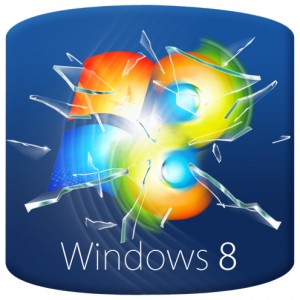 Windows users appear half as interested in trying out the new Windows 8 as they did three years ago when they jumped at the chance to test drive Windows 7, data shows.
Windows users appear half as interested in trying out the new Windows 8 as they did three years ago when they jumped at the chance to test drive Windows 7, data shows.
According to web analytics company Net Applications, only 0.11% of the computers that went online last week ran Windows 8. That number – representing 11 machines out of each 10,000 – was the same as Windows 8 averaged in March.
And it’s significantly less than Windows 7’s usage share at the same point in its development history.
At the end of the first two full months after the release of Windows 7 Beta, that operating system was powering 0.26% — or 26 out of every 10,000 — of the PCs that browsed the web.
Microsoft made early versions of both Windows 8 and Windows 7 available to anyone interested enough to download and install the trials. The former, dubbed Windows 8 Consumer Preview, debuted two months ago Sunday. Windows 7 Beta appeared in early January 2009.
It’s not possible to compare Windows 8’s initial uptake with that of Windows Vista, the 2007 operating system that most users shunned, and which has steadily lost share since Windows 7’s October 2009 release: Computerworld’s records of Net Applications’ data go back only to February 2007, one month after Vista’s launch and nine months after the release of that edition’s first public beta.
There are several possible explanations for the usage difference of Windows 8’s and Windows 7’s public previews.
After hearing or reading about Windows 8 — or even seeing themselves when they downloaded the Consumer Preview — users may have decided they didn’t like the dramatic overhaul of the user interface that features a tile-style Start page and a touch-first operation. Or they may simply be satisfied with what they’re using — Windows 7, perhaps — and believed that trying something new was a waste of their time.
Data from Net Applications seems to support the latter.
Many analysts believed that Windows 7’s quick climb up the usage stat chart was due in large part to dissatisfaction with its predecessor, Windows Vista. There’s no doubt that the two – Windows 7 and Vista – got very different receptions from users.
Last month, Windows 7 accounted for 41% of all Windows PCs, more than twice the 19% share that Vista had at the end of its 29th month.
Microsoft has also tacitly acknowledged the different reactions to Vista and Windows 7.
In mid-2009, months before Windows 7’s release, Microsoft put plain its feelings about Vista when it told enterprises to dump deployment plans for Vista and shift to Windows 7.
The company has said no such thing about Windows 7. In fact, Microsoft has urged enterprises to continue their adoption of Windows 7, even though Windows 8’s launch looms later this year.
Microsoft has not yet announced a ship date for Windows 8 or divulged pricing, although it has laid out the editions it will offer and promised to deliver the next milestone, Windows 8 Release Preview, the first week of June.
Vista and Windows 7 were released between eight-and-a-half and nine months after the launch of their respective public betas. By that tempo, Windows 8 would ship in the second half of November.





